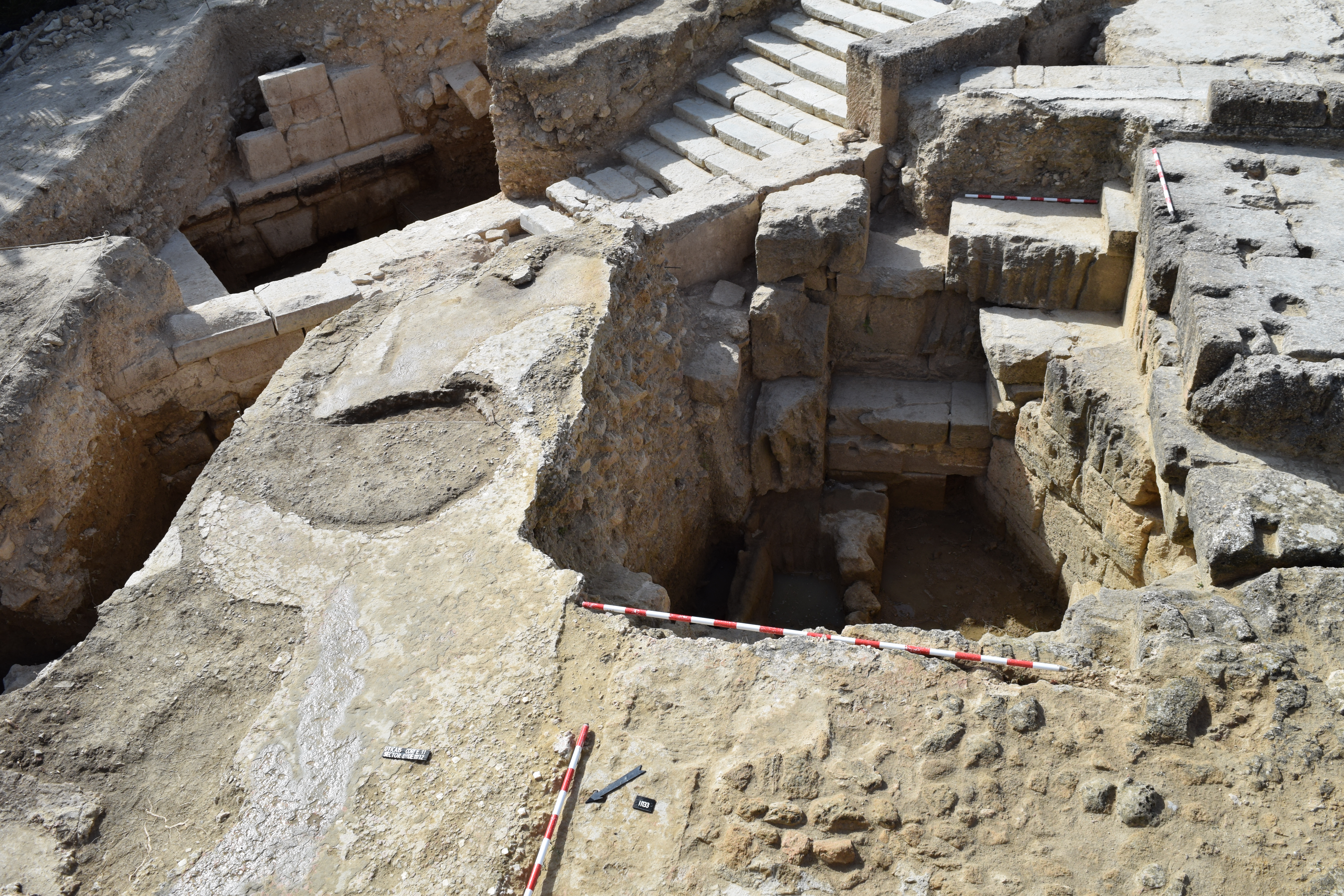The ancient city of Utica (Tunisia) was the oldest Phoenician foundation in Africa according to ancient Greek and Latin texts.
After the fall of Carthage it was the capital of the Roman province of Africa and one of the most important cities of the Mediterranean in antiquity
The area occupied by the Phoenician city has remained unexplored until a few years ago. Since 2010, a Spanish-Tunisian team has been researching in the northern sector of the city, next to the old coastline, with excellent scientific results

Utica. Area of the superimposed temples
The Utica Project. Research of the Phoenician-Punic City has as main objectives the research of the Phoenician-Punic city of Utica and its territory in the 1st millennium BC, as well as the restoration and musealization of the excavated areas. The project began in 2010 through a joint collaboration agreement between the National Institute of Heritage of Tunisia, the Universidad de Almería and the scientific association Center for Phoenician and Punic Studies (CEFYP) for renewable periods of 3 years. So far, two geophysical prospecting campaigns with GPR or underground radar have been carried out within the project in 2010 and 2016, and eight archaeological excavation campaigns between 2012 and 2019, financed by the Ministerio de Cultura de España, the Palarq Foundation (since 2018) and the Universidad de Almería.
From West to East we have distinguished two research areas. In Zone II, in the excavation of the 20th and 21st cuts, the remains of three superimposed Phoenician buildings have been discovered so far, of which only some of the perimeter walls have been partially preserved. The two oldest buildings have been dated to the 9th and 8th centuries BC, and in this area the discovery of a water well from the 9th century BC is noteworthy, containing a closed complex with Phoenician, Libyan, Greek geometric, Sardinian and Vilanovavian ceramics, as well as numerous bone remains, which have been interpreted as the remains of a collective banquet thrown into the well, which was then closed. Likewise, in the 21st court an imposing wall of ashlars from the 3rd and 2nd centuries B.C. has been discovered, which may belong to a monumental building.
In Zone I, in cut 10, a Roman insula from the 1st century AD has been discovered, delimited by a thistle and a decumanus, a Phoenician urban and industrial area that was in use from the 8th century BC and still preserves a ceramic oven and remains of metallurgical activity. In the 5th century B.C. the area was urbanised, with several houses delimited by streets on a terrace on the edge of the old coast.
To the northeast of Zone I, in Courts 11-15, the remains of two superimposed monumental temples have been discovered in the vicinity of a thermal spring, the oldest dating from the end of the 7th century BC and the most recent from the middle of the 4th century BC. Excavations have made it possible to complete the floor plan of the more recent building and to discover architectural elements such as fragments of decorated cornices, capitals and columns.
In the scientific field, the city of Utica is providing a diachronic sequence of the Phoenician presence in North Africa since the beginning of the Phoenician colonization that we can place in the 9th century BC according to the results obtained in previous campaigns and the first dates of C14. Likewise, the analyses of the exhaustive archaeological-botanical and archaeozoological surveys already obtained and in progress are providing very relevant information on the diet, crops and vegetation of the first millennium BC in the area. The results of the project constitute a new and innovative contribution to the Phoenician-Punic studies of North Africa, as well as to the study of the beginning of the Iron Age in the Central and Western Mediterranean.
In the field of conservation and musealization of the areas exhumed by the project, the consolidation of the Phoenician-Punic and Roman structures of Zone I has begun in 2018 and 2019, specifically in the urban area of cut 10. It is foreseen for 2020 the continuation of the restoration and consolidation in the temples and the creation of a small interpretation centre with the installation of didactic support for the visit.
- Project Utica. Research of the Phoenician-Punic city - 7 January, 2020



To whom it may concern,
I am second year student of archaeology on University of Belgrade and I would like to participate in these excavastions. However, if there are currently no excavations for 2021 I am ready to go on other sites in Tunisia in period (beginning of August – middle of September).
Yours faithfully,
Nikola Milivojevic